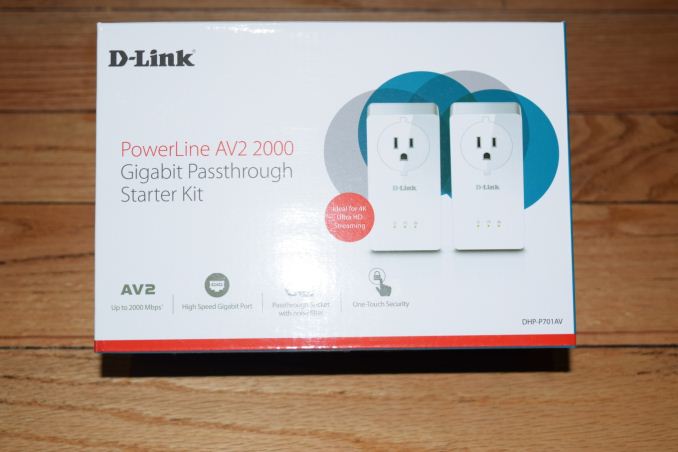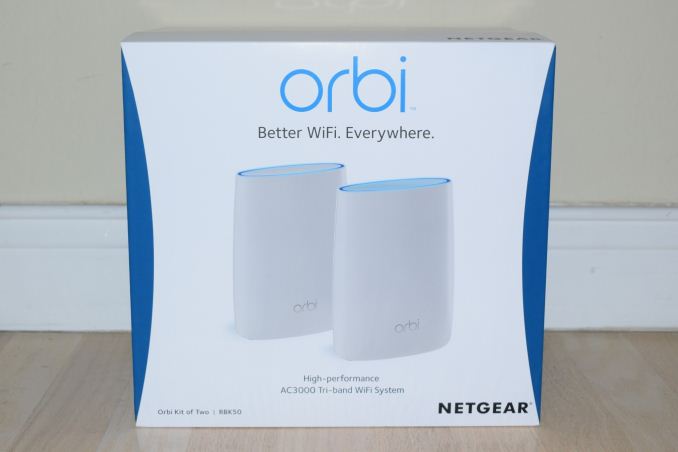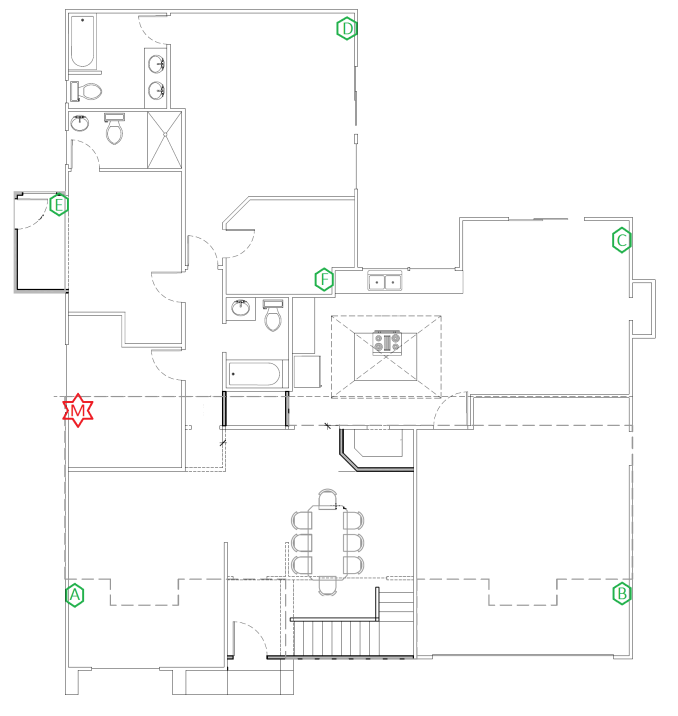Extending Home Networks - A Comparison of G.hn, HomePlug AV2 and Wi-Fi Mesh
by Ganesh T S on December 7, 2016 8:00 AM ESTEvaluation Methodology and Tested Configurations
The benchmarks processed for this article were aimed at determining the effectiveness of kits in extending the reach of the home networks. Therefore, it was an evaluation of the backhaul, rather than performance with client devices themselves.
The ARRIS RipCurrent product lineup is the most comprehensive suite in the market when it comes to hybrid networking. The following products were used in our evaluation:
- ARRIS SURFboard AC1900 Wi-Fi Router with RipCurrent using G.hn (SBR-AC1900P)
- ARRIS SURFboard AC1200 Wi-Fi Hotspot with RipCurrent using G.hn (SBX-AC1200P)
- ARRIS SURFboard Wired Network Extender with RipCurrent using G.hn (SBX-1000P)
Our review of the Comtrend G.hn powerline networking kit compared the first-generation Marvell G.hn chipset with various HomePlug chipsets from Qualcomm Atheros and Broadcom. The highest-end HomePlug AV2 chipset used in that review was the Qualcomm Atheros QCA7500 in the ZyXEL PLA5405 (AV1200-class). This chipset uses only the 0-65MHz band with MIMO, limiting the performance compared to what the HomePlug AV2 specifications allow. HomePlug contacted us with a suggestion to compare against an AV2 2000-class HomePlug AV2 product. D-Link provided us with the DHP-P701AV passthrough kit for this purpose.
In terms of testing wired backhauls using power lines, a comparison of the ARRIS SURFboard router and wired network extender (SBR-AC1900P + SBX-1000P) and the D-Link DHP-P701AV kit can show the effectiveness of G.hn and HomePlug AV2 for extending network reach.
In addition to the hardware made up of standard building blocks (Wi-Fi radios and router SOCs), Qualcomm Atheros's Wi-Fi SON is also a collection of software features. Different customers implement it differently. QCA told us that, as of Q4 2016, Netgear's Orbi is the best example because they use the whole package, while vendors like Luma, Google and eero all use some of the Wi-Fi SON features. Netgear provided us with the Orbi kit (RBK50-100NAS) to test out some of the features of Wi-Fi SON.
A comparison of the ARRIS SURFboard router and Wi-Fi hotspot (SBR-AC1900P + SBX-AC1200P) and the Netgear Orbi presents readers with data to make a decision between Wi-Fi and PLC as backhaul candidates for extending home network reach.
The evaluation of the backhaul in different cases was carried out in a 1800 sq. ft. single-level detached California residence built in the 1970s. The rough floorplan of the house, along with the testing locations, is presented below.
The kits were configured in an isolated network. In the case of routers (the ARRIS SBR-AC1900P and the Netgear Orbi), the setup was quite straightforward with a NUC with an Intel NIC connected to one of the LAN ports. At the other end, we had another NUC with an Intel NIC connected to the wired port of the Wi-Fi hotspot / wired network extender (n the case of the ARRIS kit) or one of the LAN ports on the satellite (in the case of the Netgear Orbi). Since the routers were set up by default to act as DHCP servers, there was no special configuration needed to get IPs allocated to the NUCs at either endpoint. In the case of the D-Link DHP-P701AV, we configured the NUC connected to the adapter at the master location ('M' in red, in the above picture) to act as a DHCP server.
The location of the other endpoint was varied based on two factors - powerline adapter usage scenarios, and, electrical outlet locations that could be used to address typical Wi-Fi dead spots. Six different locations were tested (A - F in green in the picture above). All major rooms, including the garage, were covered.
The purpose of our benchmarking was not to tune the stream configuration for obtaining maximum possible bandwidth. Rather, we wanted to replay the same stream for multiple adapter sets in order to determine comparative performance. iperf with default parameters was used for benchmarking. On the 'server', we ran the following command:
TCP: iperf -s -B 10.1.1.2
UDP: iperf -s -u -B 10.1.1.2
The 'client' was connected to it using the following command:
TCP: iperf -c 10.1.1.2 -P ${num_parallel_streams} -t 30
UDP: iperf -c 10.1.1.2 -u -b ${curr_bw_to_test}m -t 30
The number of parallel streams were tested between 20 and 25 for the TCP case. The maximum obtained bandwidth was recorded. For the UDP case, we altered the bandwidth to test in order to arrive at the value that resulted in less than 1% packet loss during transmission. The roles of the server and client were then reversed, and the same benchmarks were processed.














56 Comments
View All Comments
jardows2 - Wednesday, December 7, 2016 - link
Interesting comparison. Looks like you get flexibility or performance, but not both. It looks like the G.hn performance is what is hurting the ARRIS products, so it will be interesting to see what the next generation can do.For me personally, I've done the best suggestion, and just ran Ethernet throughout my house!
nathanddrews - Wednesday, December 7, 2016 - link
I'm with you there, hard wired and ready for 10GbE (should it ever be cost effective). Still, sometimes plans change ("The TV looks better over... there!") and that's where I really like powerline-based networking.Did I miss the tests measuring latency and/or packet size? Seems to me that the major issue with all non-ethernet networks comes down to that.
chaos215bar2 - Wednesday, December 7, 2016 - link
What, you didn't already run Cat 6 "over there"? For shame!Seriously, though. If you go through the time and expense of wiring a home with ethernet, do get the highest quality cable you can reasonably predict will be useful in the future, and do run more drops than you ever imagine you'll need or can practically wire up at your network hub. You don't need to use them all on day one, but you'll be really glad they're there when you decide the TV just really needs to be on that other wall.
nathanddrews - Thursday, December 8, 2016 - link
Haha, true. I try to get at least two ethernet jack on every wall. There's just always something that gets missed. To me, the single best application of powerline networking is home automation, but almost none of the best toys use it (Hue, Nest, etc.)adriangb - Sunday, December 18, 2016 - link
The problem I've always had with Powerline is the homes wiring: in old homes, or homes that have been extended, sometimes it won't connect at all or it will have pretty bad speeds, and you can't know until you try it reallyjamyryals - Wednesday, December 7, 2016 - link
I have Cat6 and several access points around my house, and the connectivity is great. The problem my family runs into is their devices will often stick to a weak signal instead of hopping over to an access point with a stronger signal. Can anyone recommend a mesh networking solution (single SSID) with a wired backhaul?asendra - Wednesday, December 7, 2016 - link
You shouldn't need to move to a mesh system to get that functionality. "Enterprise" class APs like ubiquiti AC line offer zero-handoff roaming.Thats the setup I have. Ethernet to every room, and in a couple of strategically selected rooms I have two Ubiquity AC APs installed.
I find mesh systems a good and easy solution for "normals" needing big wifi coverage, but I you have ethernet, I prefer my solution, it find it more optimal.
jamyryals - Wednesday, December 7, 2016 - link
Sounds like just what I need, I'll look into it thank you.sl0wcheetah - Wednesday, December 7, 2016 - link
Agree. I wasted money on 2 "good" APs (one was a router used as AP) before going with Ubiquiti.It works great.
Ratman6161 - Wednesday, December 7, 2016 - link
Yes but anything with the word "enterprise" in it usually means you are going to pay more. What if I want "cheap but good" :)?